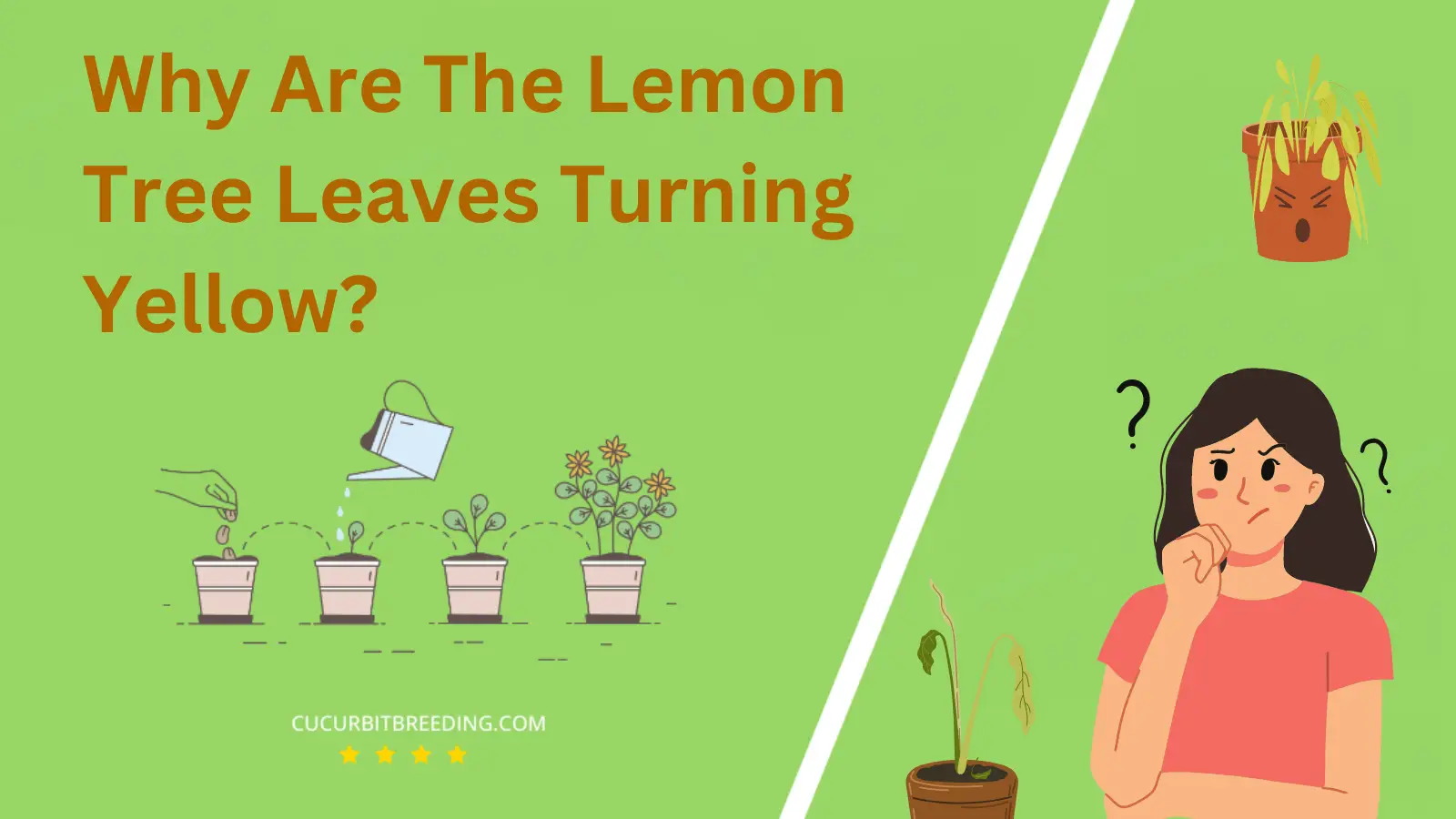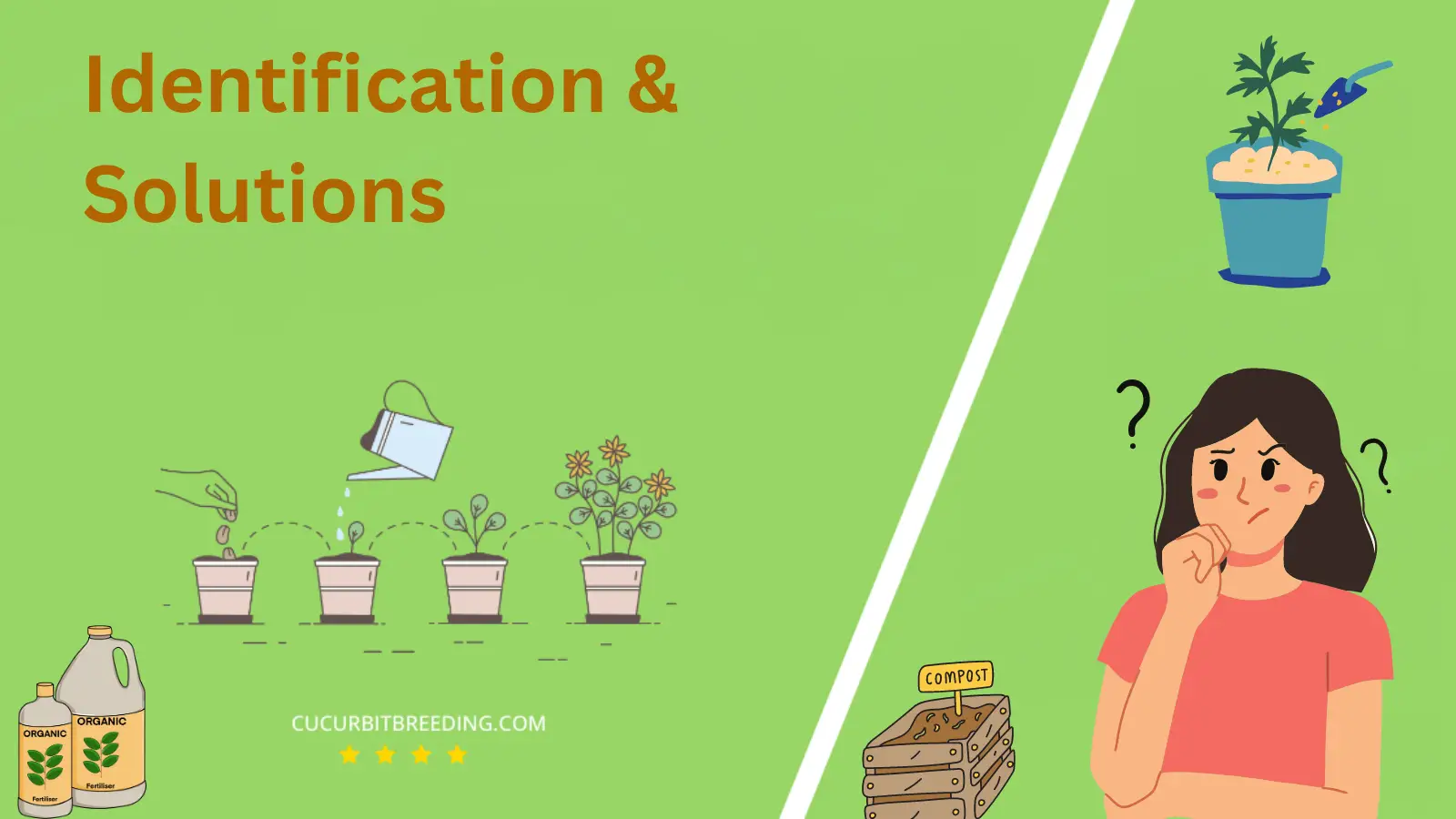
Many garden explorers have voiced a common concern: Why are the lemon tree leaves turning yellow? This intriguing question evokes a multitude of potential culprits. Is it a deficiency in nutrients, overwatering, or perhaps, a pest infestation? Or could it be a damning sign of disease? While the mystery remains, one thing is certain – such discoloration is a distress call from your citrus companion, yearning for help.
Why Are The Lemon Tree Leaves Turning Yellow?
1. Nutrient deficiency
| Description | causes chlorophyll degradation, leading to yellowing of leaves, affecting photosynthesis and plant health. |
|---|---|
| Solution | Provide balanced fertilizer with essential nutrients for healthy leaf development. |
Nutrient Deficiency Impact on Lemon Trees: When a lemon tree is deficient in essential nutrients, it hampers the process of photosynthesis, consequently affecting the quality and production of lemons. The leaves start turning yellow as an early sign of mineral deficiency, primarily nitrogen, iron, or magnesium.
Solution for Nutrient Deficiency: Firstly, it’s crucial to apply a well-balanced citrus fertilizer in your lemon tree’s root zone during the growing season. Look for fertilizers containing nitrogen, phosphorous, potassium, and also secondary nutrients like magnesium, calcium, and sulfur.
Supplement the soil with iron chelates if an iron deficiency is diagnosed. Ensuring proper watering of the tree can also help as over-watering can wash away essential nutrients while under-watering can prevent the plant from absorbing the required nutrients.
Foliar Feeding: Another technique to fix nutrient deficiency is foliar feeding, where a water-soluble fertilizer is sprayed onto the leaves. This provides nutrients directly to the plant, resolving the deficiency faster. Foliar feeding is particularly effective in treating iron and magnesium deficiencies in lemon trees.
Professional Help: Lastly, if these solutions don’t result in improvements, it’s advisable to seek advice from a local extension service or a professional arborist. They can get soil samples checked in a lab to reveal precisely which nutrients are lacking, allowing for more targeted treatments.
2. Overwatering
| Description | can lead to root rot, which inhibits nutrient uptake and causes yellowing of the leaves. |
|---|---|
| Solution | Reduce watering frequency and allow the soil to dry out between waterings. |
Overwatering causes the yellowing of leaves in lemon trees. Water-logging the soil leads to poor drainage, causing soil saturation and hindering oxygen access to plant roots. These conditions can provoke root rotting, which reduces the overall plant’s capacity to absorb nutrients, thus directly affecting leaf coloration.
To address overwatering, adjust your watering schedule. Lemon trees prefer well-drained soil, so allow the top few inches of soil to dry out between watering. If the tree is in a pot, ensure it has adequate drainage holes. Additionally, consider relocating the tree if it’s in a low-lying area where water collects. Regular monitoring of soil moisture levels will help maintain optimal watering conditions and keep your lemon tree healthy.
3. Underwatering
| Description | Insufficient water intake leads to yellowing of lemon tree leaves due to dehydration and nutrient deficiency. |
|---|---|
| Solution | Increase watering frequency to provide adequate moisture for the lemon tree’s roots. |
Underwatering Impact on Lemon Tree: Underwatering is a significant cause of lemon tree leaves turning yellow. Lemon trees need a steady supply of water to transport nutrients, maintain cellular structure, and facilitate photosynthesis. When a lemon tree is under-watered, these processes are hindered. Underwatering can cause stress, leading to the tree’s inability to create chlorophyll, resulting in the yellowing of leaves.
Solutions for Proper Watering: To counteract this process, ensure your lemon tree is watered deeply and regularly. The soil should be moist but not waterlogged. In hot weather, water more frequently, but in cooler seasons, reduce watering. It’s advisable to conduct a soil humidity gauge to verify the tree is getting sufficient water. Regular watering practices can alleviate underwatering issues, restoring your lemon tree to its, normally vibrant, healthy green leaves.
4. Pest infestation
| Description | Insufficient water intake leads to yellowing of lemon tree leaves due to dehydration and nutrient deficiency. |
|---|---|
| Solution | Increase watering frequency to provide adequate moisture for the lemon tree’s roots. |
Lemon tree leaves may turn yellow due to pest infestations. Pests such as scale, mites, aphids, and whiteflies feed on the sap of the lemon tree which can lead to a lack of vital nutrients, causing the leaves to yellow. These pests may also introduce diseases that harm the tree’s health.
A good solution for this issue is a regular inspection for pests. Signs of infestation include leaf discoloration, curling leaves, and visible insects. If their presence is confirmed, one way to address it is by using a suitable insecticide, or a soap-and-water solution for a more environmentally friendly option.
You can also encourage beneficial insects, like ladybugs and lacewings, that prey on these pests. Remember to also ensure your lemon tree is well-watered and fertilized, to give it the strength to recover from a pest attack.

5. Fungal or bacterial infection
| Description | Increase watering frequency to provide adequate moisture for the lemon tree’s roots. |
|---|---|
| Solution | Apply a copper-based fungicide to treat the fungal or bacterial infection causing yellowing of leaves. |
Fungal or bacterial infections can cause yellowing of your lemon tree leaves. These microorganisms penetrate the plant’s defenses and disrupt the vital internal functions, leading to stress and slowed growth. The infectionst can interfere with the plant’s capacity to transport water and nutrients, thereby depriving the leaves of essential components for photosynthesis and causing them to turn yellow.
To remedy the situation, consider applying a fungicide or bactericide that is suitable for your lemon tree. However, optimal prevention strategies involve maintaining a clean growing environment and practicing good plant hygiene. Removing fallen leaves and debris can help in hampering the spread of these pathogens by eliminating their breeding ground. Also, avoid splashing soil while watering as bacteria and fungi in the soil can be splashed onto the leaves. Should the infection seem severe, pruning the infected parts may be necessary.
6. Environmental stress (e.g. extreme temperatures)
| Description | can disrupt chlorophyll production, leading to yellowing of leaves. |
|---|---|
| Solution | Provide consistent watering and ensure proper drainage to prevent environmental stress causing yellowing of leaves. |
When a lemon tree is exposed to extreme temperatures, it goes into a sort of shock. This shock can manifest in several ways, but one of the most common symptoms is the yellowing of leaves. This occurs because the tree is trying to conserve water and nutrients, redirecting them from the less essential parts (like the leaves) to the core functions such as root development and fruit production.
Now, the solution for this problem lies in controlling the tree’s exposure to extreme temperatures. In colder climates, you could place it in a location where it gets enough sunlight but is shielded from harsh winter winds. A moderate use of heaters can also help, but be careful not to overdo it as it may dry out the air too much. In hotter climates, provide some shade during the hottest part of the day, and ensure that the tree is adequately watered. You may also use a mulching method to help retain soil moisture. Reflective ground cover could also be used to protect your tree from searing heat. Remember to adapt your care strategies to the specific needs of the climate and the individual tree’s condition.
7. Natural aging process
| Description | The natural aging process of leaves causes them to turn yellow due to reduced chlorophyll production. |
|---|---|
| Solution | Maintaining a healthy lifestyle with regular exercise and a balanced diet can slow down natural aging. |
Yellowing of lemon tree leaves is often caused by insufficient nutrients – specifically, a lack of iron, magnesium, zinc, or nitrogen. Known as chlorosis, this condition occurs when these essential nutrients are not present in the soil in sufficient quantities for the tree to be able to fully manufacture chlorophyll.
Chlorophyll is vital for photosynthesis – the process by which plants convert light energy into food. When a lemon tree cannot produce enough chlorophyll due to nutrient deficiency, the leaves turn yellow as a result. This can hinder the tree’s growth and the development of its fruits, as the tree is not as efficient at photosynthesising and therefore is not getting the energy it needs.
To correct this issue, you should administer a balanced citrus fertilizer that specifically meets the needs of lemon trees. This fertilizer should contain high amounts of nitrogen, along with additional essential elements like iron, zinc, and magnesium. Regularly check the pH level of your soil as well, as it has a big impact on nutrient absorption. The ideal soil pH for lemon tree is between 6.0 – 7.5. If it is more alkaline, you might consider adding sulfur to decrease the pH level. Also, maintain an appropriate watering schedule because both overwatering and underwatering can contribute to nutrient-related issues.